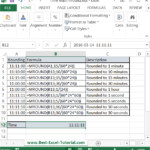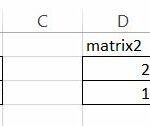Excel Reverse Count: Unveiling the Backward Magic
Reversing the count in Excel, or counting backwards, can be a handy technique for various tasks, such as creating reverse ordered lists, countdowns, or simply numbering rows in the opposite direction. This “backward magic” can be achieved through several methods, depending on your specific needs. Here are a few approaches to create a reverse count in Excel:
Table of Contents
Method 1: Simple Reverse Count Formula
If you have a column of data and you want to number it in reverse order (for example, starting from the bottom with 1, going up), you can use a simple formula. Assume your data is in column A, and you want the reverse count in column B.
- Determine the Count: First, find out how many entries you have. If your data is in column A starting from A1, you can place this formula in any empty cell to get the total count: =COUNTA(A:A).
- Apply Reverse Count Formula: In the first cell of column B where you want your reverse count to start (assuming B1), use the following formula if, for example, your count in step 1 was 100: =100-ROW(B1)+1. Replace 100 with the actual total count of your items.
- Drag the Formula: Drag the fill handle (the small square at the bottom right corner of the cell) upwards or downwards to fill your column with the reverse count.
Method 2: Using Excel’s RANK Function
For a dynamic approach that automatically updates as you add more data, you can use Excel’s RANK function combined with a helper column.
- Set Up a Helper Column: In a new column next to your data (say column C if your data is in column A), enter a sequence of numbers that matches your data’s order. For instance, you can simply enter 1, 2, 3, etc., next to each data entry.
- Use the RANK Function for Reverse Count: In the first cell of column B (next to your first data entry), enter the formula: =RANK(C1, $C$1:$C$100, 1). Replace $C$100 with the reference to your last helper number. This formula will rank your data in ascending order based on the helper numbers, effectively creating a reverse count.
- Drag to Fill: Copy the formula down column B to apply the reverse ranking to all entries.
Method 3: Using Excel Tables for Dynamic Counting
If you prefer a more dynamic and automatically updating approach without dragging formulas, you can use an Excel Table.
- Convert Your Data to a Table: Click on any part of your data, go to the Insert tab, and choose Table. Ensure the “My table has headers” option is checked if your data includes headers.
- Add a Reverse Count Column: In the first empty column within the table, enter a formula that uses structured references to count rows in reverse. For example: =COUNTA([Column1])-ROW()+2. Replace [Column1] with the actual name of your column. This formula adjusts automatically as you add or remove data from your table.
Experiment with these techniques to find the best fit for your project and enjoy the flexibility Excel offers in data manipulation and presentation.



